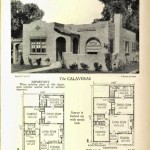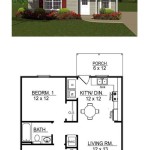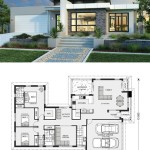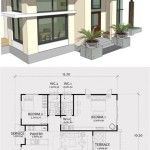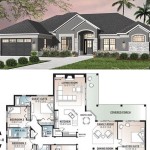How Much Does a Building Plan Cost?
The cost of a building plan can vary significantly depending on several factors, including the size and complexity of the project, the location, the type of building, and the architect's experience and fees. Understanding these factors is crucial for budgeting your construction project accurately.
Factors Affecting Building Plan Costs
Here are some of the key factors that influence the cost of a building plan:
1. Size and Complexity of the Project
The size and complexity of your project directly impact the amount of work required for the architect to create a detailed plan. A simple, small-scale project, like a detached garage, will require less time and effort compared to a multi-story residential building or a commercial complex. The number of rooms, the floor plan, the overall layout, and the inclusion of specific features like a pool or a complex HVAC system all contribute to the complexity of the project.
2. Location
The location of your project can influence the cost of building plans due to factors like local building codes and regulations. Some areas may have stricter requirements, leading to more detailed and extensive plans. The availability of skilled architects and the general cost of living in a particular region can also impact the cost of their services.
3. Type of Building
The type of building you are constructing plays a crucial role in determining the cost of the plan. Residential projects, for instance, often require less comprehensive plans than commercial buildings, which demand detailed specifications for structural integrity, fire safety, and accessibility standards. Similarly, specialized buildings like hospitals, schools, or industrial facilities require highly specialized plans tailored to their unique requirements.
4. Architect's Experience and Fees
The experience and reputation of the architect significantly influence the cost of their services. Architects with extensive experience and recognized expertise often command higher fees due to their knowledge, skills, and network. Their fees can vary depending on their individual pricing structure, which may be based on an hourly rate, a percentage of the project cost, or a fixed fee. It is essential to discuss the architect's fee structure and payment terms upfront to avoid any surprises.
Types of Building Plans and Their Costs
Building plans can encompass various levels of detail, each impacting the overall cost. Common types of plans and their approximate costs are:
1. Schematic Design
This initial stage involves developing a basic layout of the building, including the floor plan, elevations, and site plan. The cost of schematic design typically ranges from 5% to 15% of the total construction cost. It is important to note that these figures are estimates and can vary significantly depending on the project's complexity and the architect's fees.
2. Design Development
This phase focuses on refining the design and adding more details, such as interior spaces, finishes, and fixtures. The cost of design development is usually between 10% and 20% of the total construction cost. It is a crucial step in the planning process as it ensures the design meets the client's requirements and addresses any potential issues.
3. Construction Drawings
These are the final set of detailed plans used by contractors to build the structure. They include architectural, structural, mechanical, electrical, and plumbing drawings. The cost of construction drawings typically ranges from 25% to 40% of the total construction cost. Since these plans are essential for the construction process, it is crucial to ensure their accuracy and completeness.
Saving Costs on Building Plans
While the cost of building plans can be substantial, there are ways to manage expenses without compromising the quality of the design. Some strategies include:
1. Choosing the Right Architect
Thorough research and careful selection of an architect can help you find someone who fits your project's needs and budget. Consider interviewing multiple architects to understand their experience, approach, and fee structure. It's crucial to establish a clear understanding of their services and the expected costs upfront.
2. Streamlining the Design Process
Providing clear and concise information about your project requirements and preferences can streamline the design process and potentially reduce costs. Clearly communicating your budget, desired aesthetics, and functional needs allows the architect to develop a plan that is both efficient and cost-effective.
3. Utilizing Technology
Utilizing technology like Building Information Modeling (BIM) can help architects create more accurate and detailed plans, leading to fewer revisions and potential cost savings. BIM software allows for better visualization, collaboration, and coordination, which can ultimately benefit the overall construction process.

Building Permit Cost Complete List Of Average S Getasiteplan

Home Floor Plan Change Costs Kitchen New Bathroom

Calculator Step 1 Cost To Build

Custom Floor Plan Cost 2d And 3d Plans

Golden Eagle Log And Timber Homes Home

Building On The Affordable House Plans Of 2024 Houseplans Blog Com

750 Sq Ft House Plans Can Be Affordable Craft Mart

Cost To Build A New House Newlywoodwards

House Building Cost Estimator Estimate Florida Consulting

Architectural Asbuilt As Built Services By The Professionals
Related Posts

